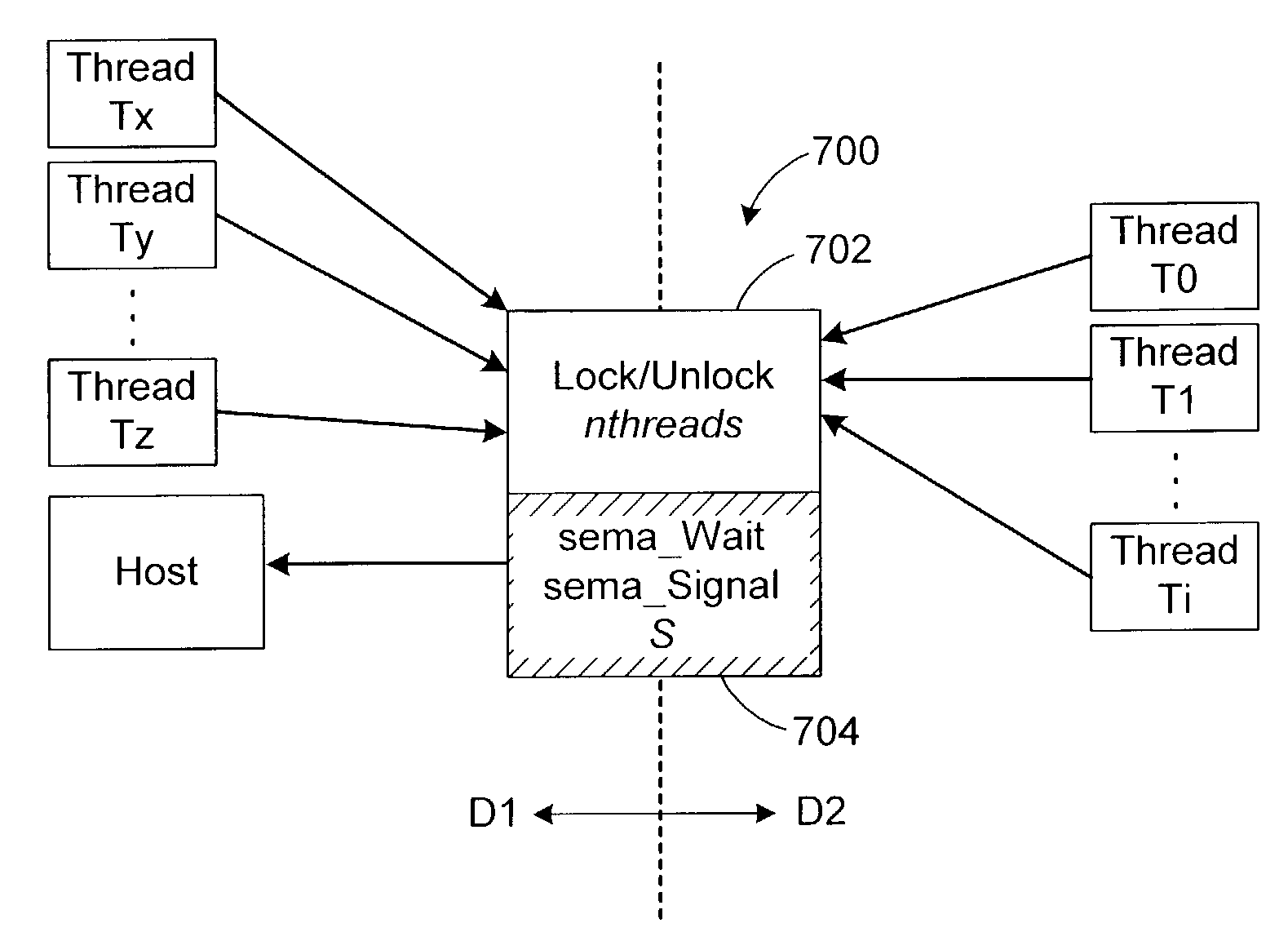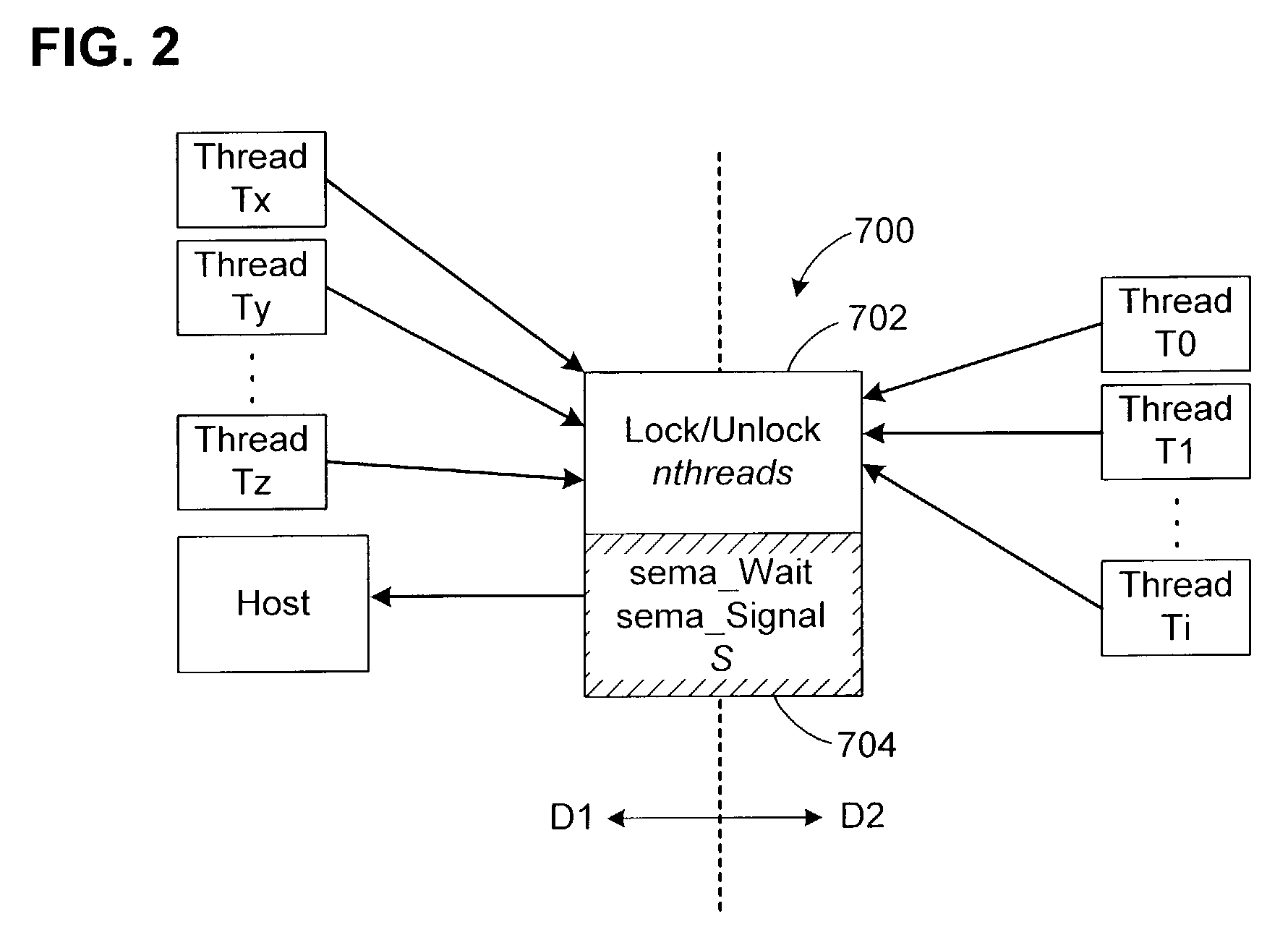Composite lock for computer systems with multiple domains
a computer system and domain technology, applied in computing, instruments, electric digital data processing, etc., can solve problems such as serious problems, cpu power, and computation cycles, and achieve the effect of limiting factors, preventing cpus from changing linkings, and limiting factors
- Summary
- Abstract
- Description
- Claims
- Application Information
AI Technical Summary
Benefits of technology
Problems solved by technology
Method used
Image
Examples
Embodiment Construction
[0070]In a system in which concurrent threads require mutually exclusive access to a resource, the invention provides a domain-crossing, composite lock with a platform-independent lock component and a conventional, platform-dependent lock component. The only assumption concerning the platform-dependent lock component is that it operates as a semaphore, such as is provided by all common OSs.
[0071]The invention is particularly advantageous where the concurrent threads run in different domains, although this is not required by the invention. The two lock components also operate across the different domains. In cases where the lock according to the invention is uncontested, proper, mutually exclusive concurrency can be provided by the composite lock without performing any domain crossings. In the remaining cases, when there is a need to transition between lock components, and thus domains, the invention detects this need rapidly, although the overall cost will often be dominated by the ...
PUM
 Login to View More
Login to View More Abstract
Description
Claims
Application Information
 Login to View More
Login to View More - R&D
- Intellectual Property
- Life Sciences
- Materials
- Tech Scout
- Unparalleled Data Quality
- Higher Quality Content
- 60% Fewer Hallucinations
Browse by: Latest US Patents, China's latest patents, Technical Efficacy Thesaurus, Application Domain, Technology Topic, Popular Technical Reports.
© 2025 PatSnap. All rights reserved.Legal|Privacy policy|Modern Slavery Act Transparency Statement|Sitemap|About US| Contact US: help@patsnap.com



